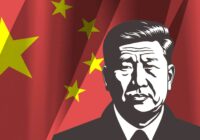The one thing the city of Shenzhen — whose nearly 13 million people comprise the industrial engine of China’s Guangdong province — seems unwilling to reimagine is its name. The name Shenzhen, which loosely translates to “irrigation ditch” or “drainage dump,” is the only piece of the city’s incredible story that remains stuck in the past.
Beginning in 2020, Shenzhen, in partnership with Chinese tech behemoth Tencent and NBBJ Architects, embarked on the design of a coastal, sustainable, state-of-the-art neighborhood called Net City to serve as the exclamation point capping Shenzhen’s status as China’s Silicon Valley. And yet, upon its completion in 2027, Net City, like Shenzhen itself, will represent far more than just another technology company’s tricked-out corporate campus. In fact, Net City might just set the global standard for urban development in the 21st century. That is if it can navigate the perilous waters that have sunk so many similarly intentioned projects in the past.
Policies, Principles, People
Green, tech-infused infrastructure is no longer groundbreaking in and of itself, but neither is the desire of major global firms to directly fund urban investment as a business strategy. Examples of this often quixotic foray range from Google’s disappointing but understandable discontinuation of investments in a Toronto smart city project to Fordlandia, Ford Motor Company’s failed Amazonian utopia chronicled brilliantly in Greg Grandin’s 2009 award-winning book. For both the Googles of today and those of generations past, it appears that products remain significantly easier to manufacture than physical places.
Any local economic development professional, or for that matter anyone who has tried to renovate a kitchen, will tell you that construction projects, no matter their scale, are marked by an eternal struggle between the perfect and the possible. What, then, can set Tencent’s Net City apart from these previous failures? To borrow the time-honored language of geopolitical analysis, the potential answers come in three “buckets”: policies, principles and people.
How Tech Innovation Can Revive the US Economy
On the policy front, the analysis must begin with the fact that there exists no better example of the opening of markets, however gradually and cautiously, as an accelerant for innovation, growth and prosperity than Shenzhen. It is stunning how much economic dynamism has been unleashed in this former fishing village over the past few decades, and the same innovation-spurring economic policy framework that enabled the city’s rise will similarly nurture the growth and ongoing vitality of the Net City project as it matures.
That said, Shenzhen is not the only part of China that has grown. And, in immediate relevance to Net City, it would not be the only place where China has invested untold billions only to end up with what are commonly referred to now as ghost cities. A Net City skeptic might point to both the ambiguous nature of the true costs of this ambitious urban development and those still unoccupied, debt-funded townscapes littering China’s interior still awaiting their first residents as the fodder for their wariness.
Product and Place
Skeptics are also right to cite the lingering uncertainty of COVID-19 and fissures with nearby Hong Kong as risks to the sizable foreign direct investment Shenzhen has enjoyed throughout its rise. While the Chinese government and Tencent have every incentive to ensure the successful development of Net City, even these giants are not immune to the conditions of the world economy and thus should double down on the (relatively) open policy frameworks and diversified, reliable financing strategies that have thus far enabled Shenzhen’s rise.
Next, as it relates to the principles upon which Net City has unapologetically been founded, its focused, intentional blending of work and leisure with the natural world place sustainability at its core in a manner and at a scale no previous corporate community can claim. Limitations on cars in favor of pedestrian-friendly walkable spaces coupled with reliance on renewable energy sources will provide a rising China with beautiful, tangible evidence that it, too, is taking steps to combat climate change and to shape the next century of life on this planet in ways the rest of the world might cheer.
These commitments to sustainability, while encouraging, cannot only be for show. Net City provides China with an opportunity to demonstrate not only its desire to lead the world as a center of innovation, but as an upholder of the shared values and responsibilities that come with the terra firma for any global power.
Lastly, as it relates to the people who will someday call this new neighborhood home, it is possible that no single neighborhood in the world has ever rooted itself so enthusiastically in the philosophy of user-centered design as Net City. The blurring of lines between work and play to come upon its completion will pale in comparison to the implications of Net City’s more meta-level, but no less intentional, blurring of product and place. But just as fatefully as the designers of Fordlandia discovered that places are not products, so too must Net City’s master planners remember that people are not products either.
Net City’s development has begun at a moment when the familiar dueling concepts of work and life have also merged into one amorphous, quarantine soup of time and space. While billions around the world cannot wait to return to certain elements of pre-COVID work-life balance, a more realistic forecaster will admit that work and life have become intertwined in ways that have transformed experiences on both fronts and will not soon be undone.
This march may appear inevitable, but it remains an open question how much further people will willingly participate in the elimination of boundaries between home and work, of private and public spaces and of restrictions instead of rights. Whether discussing a new piece of technology or a new smart city, the tired bargain between new features and old freedoms is a false one. Smart cities need not — and should not — dangle the possibility of positive environmental outcomes behind the acceptance of stricter, tech-fueled surveillance states.
The ongoing development of this initiative will fascinate global analysts for the majority of the next decade that stands to reveal the level of commitment its designers have to the lofty promises they have made at its outset. But beneath all that potential and possibility Net City might also reveal the answer to a deeper question: Is the internet a place we want to live?
*[Fair Observer is a media partner of Young Professionals in Foreign Policy.]
The views expressed in this article are the author’s own and do not necessarily reflect Fair Observer’s editorial policy.
Support Fair Observer
We rely on your support for our independence, diversity and quality.
For more than 10 years, Fair Observer has been free, fair and independent. No billionaire owns us, no advertisers control us. We are a reader-supported nonprofit. Unlike many other publications, we keep our content free for readers regardless of where they live or whether they can afford to pay. We have no paywalls and no ads.
In the post-truth era of fake news, echo chambers and filter bubbles, we publish a plurality of perspectives from around the world. Anyone can publish with us, but everyone goes through a rigorous editorial process. So, you get fact-checked, well-reasoned content instead of noise.
We publish 2,500+ voices from 90+ countries. We also conduct education and training programs
on subjects ranging from digital media and journalism to writing and critical thinking. This
doesn’t come cheap. Servers, editors, trainers and web developers cost
money.
Please consider supporting us on a regular basis as a recurring donor or a
sustaining member.
Will you support FO’s journalism?
We rely on your support for our independence, diversity and quality.






